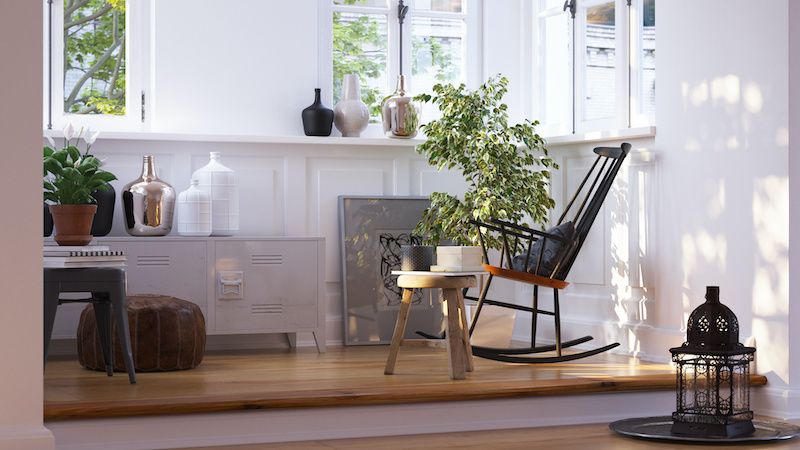
Community Trends
How do we connect together today to live a better future tomorrow?


Words by Kate Eales
A well-designed home should provide shelter, safety and be a sanctuary from the outside world. However, given the current state of affairs across the world that have led to residential lockdown, we have had to become more dependent on our home environment than ever before. In the UK, over the last three months of stay-at-home measures, the place we once experienced as a location largely dedicated to our non-working lives has been required to take on a number of other essential roles. Our homes have been forced to become places of work and learning, of motivation and inspiration; a space to calm anxieties, to exercise and to play host to digital simulations of the in-person social interactions missing from our day-to-day lives, while simultaneously being spaces we have been confined to for weeks on end, for some in total isolation.
It is more pressing than ever to create home environments that increase our mental health and wellbeing. What steps can we take within our limited scope to better adapt our environment, given the support we will require in the weeks and months ahead? According to a theory postulated by Dr Bill Hettler, co-founder of the National Wellness Institute, and later expanded, there are six dimensions of wellness that encompass a healthy lifestyle. These dimensions are emotional, occupational, physical, spiritual, intellectual and social. For many, ordinary circumstances would allow for the fulfilment of almost all of these needs with little conscious thought. However, when life as we know it has been placed on hold, we need to find other ways of fulfilling these requirements for a sense of wellbeing. By adapting our homes to support each of these dimensions of wellness, we can ensure that our home environment continues to support our mental health and wellbeing through uncertain times.
Use colour psychology
Redesign your home to be truly multi-functional by embracing the philosophies of colour psychology, where possible with the paints, artwork and other interior design pieces you might have to hand. Create a peaceful, relaxing atmosphere in your bedroom by using shades of blue or earthy tones to promote calm and tranquillity. You can incorporate brighter tones in your living space to help inspire and motivate, ensuring there is a distinct divide between the pressures of everyday life and the haven of your bedroom retreat. If you are fortunate to have a dedicated office space, you can boost positivity with shades of yellow, known to promote creativity and optimism; or alternatively, you can turn to shades of green to achieve a balanced and calmer atmosphere for longer working hours.
Improve air quality
If there is one positive insight to remember during the lockdown period, it is that our natural world has been healing. Reduced travel has led to a phenomenal improvement of air quality, particularly in urban areas. Air quality plays an important and often undervalued role in our mental health and wellbeing; better quality air is effective in increasing blood-flow and stimulating the senses. To better improve your spiritual tranquillity and physical wellbeing, try and ensure that there is increased airflow throughout your home, with fresh air circulating between rooms through open windows and doors where possible.
Join online communities
Technology has proven to be crucial in this difficult time, offering a new vision of how our sense of community can expand across digital horizons. The internet has provided a whole host of innovative ways to foster everyday communications and engender social wellness. Online video conferencing and chat applications have the ability to transform our living rooms into social spaces, connecting us with friends and family members across any distance. Take advantage of these new avenues of communication and connectivity by initiating contact with friends and family, or by joining new communities online and expanding your social circle.
Create a sleep sanctuary
A sharp, productive mind is often bolstered by a good night’s sleep. Transform your bedroom into a sleep sanctuary by redesigning the space to help aid uninterrupted rest; try rearranging existing furniture to see if this promotes a more restful night’s sleep. Darkness is pivotal for achieving good-quality sleep, encouraging your body to release essential hormones that aid muscle relaxation and temperature regulation for deeper sleeping patterns. Installing effective blackout curtains or blinds can create a more productive mindset simply and efficiently. If no blackout options are available, an eye mask can create the same effect.
Find outdoor space
Environmental wellness refers to our ability to feel we are making a positive impact on our environment, and being aware of the personal responsibility we hold for the world we live in. Take the time to foster your sense of environmental wellness by dedicating time to making your home more eco-friendly. You might begin planting vegetable gardens in your outdoor spaces, or create herb boxes in your windows. You can also dedicate yourself to better home recycling to continue helping the environment to thrive.
Enable productive working
For many of us, remote working has engendered a host of new challenges, adding to the stress we may already experience in our day-to-day lives. Creating a pleasant, dedicated workspace can help to reduce this stress, allowing you to leave your work behind at the end of the day and gain that much-needed separation between work and play.
Try internet-based activities
Exercise is one of the most widely recognised attributors to positive mental health and wellness. However, with leisure centres, gyms and sports clubs closed to the public, keeping up with a daily exercise regime can seem challenging. Establishing a time and space to exercise will help keep you in a healthy routine, sustaining your physical wellness and thus supporting your overall mental wellbeing. Technology can also play a supportive role in improving physical wellness in isolation. The internet can provide a range of alternative digital inspirations and guides to follow for physical activities. With workout instructors and other fitness gurus online, you have a wealth of wellness at your fingertips. Not only can you exercise your physical self, you can also take essential courses in mindfulness, meditation and yoga to boost your mental wellbeing, even whilst enduring a difficult situation.
Regardless of your choices, creating a space that fosters wellbeing is crucial in complicated and distressing times. By building an immediate environment that is safe and tranquil, your wellbeing can be nurtured and your spirits revitalised, all without leaving your home.